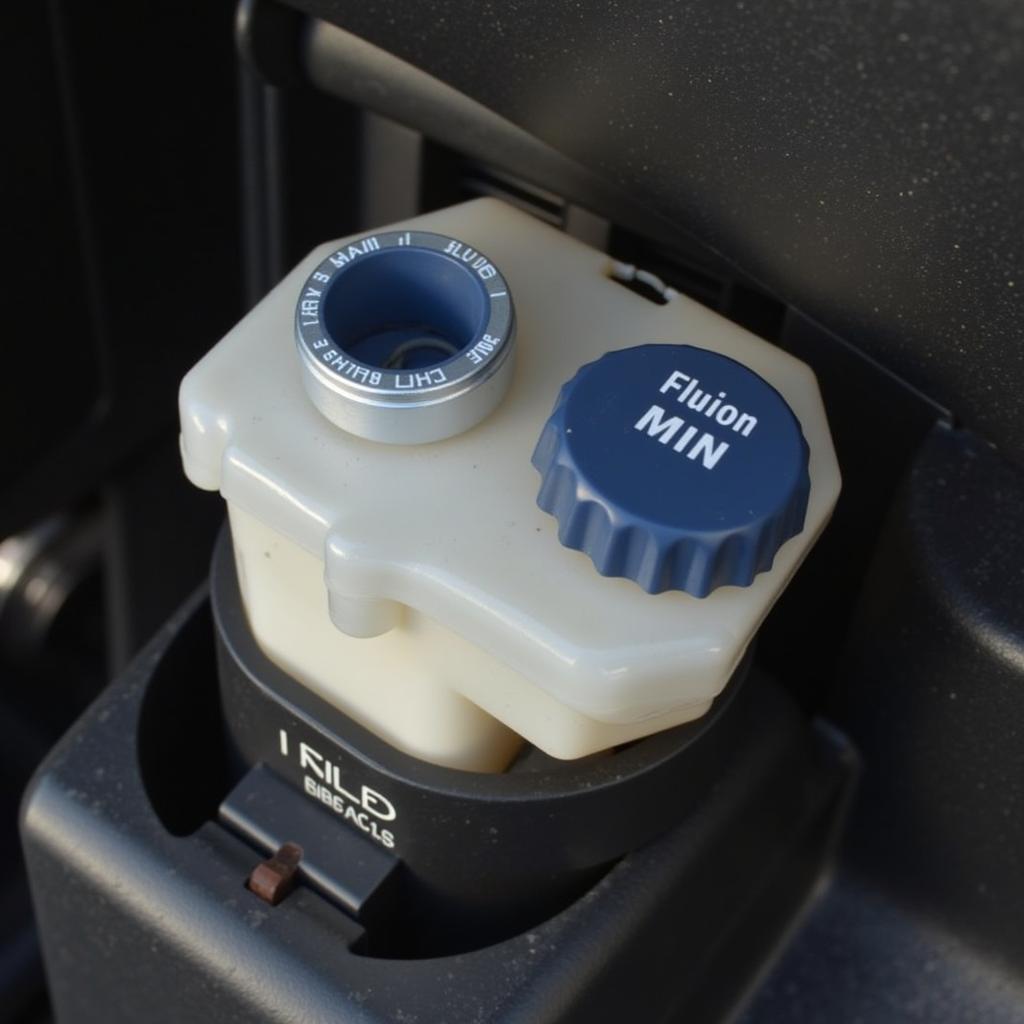A red brake warning light illuminating on your 2008 F-150’s dashboard is a clear signal that your truck’s braking system requires immediate attention. Ignoring this warning light can lead to dangerous driving conditions and potentially costly repairs. This comprehensive guide will delve into the common causes behind a red brake warning light on a 2008 F-150 and provide you with the necessary information to diagnose and address the issue.
Understanding Your Brake Warning Light
The red brake warning light is part of your F-150’s complex braking system, designed to alert you to potential issues that compromise your ability to stop safely. When this light turns on, it indicates one or more of the following:
- Low Brake Fluid: Your brake fluid level is critically low, potentially due to a leak or worn brake pads.
- Parking Brake Engaged: You may have forgotten to disengage your parking brake.
- Brake System Malfunction: A fault within the hydraulic system, such as a failing master cylinder or ABS module, can trigger the warning light.
- Worn Brake Components: Worn brake pads, rotors, calipers, or brake lines can impact braking performance and trigger the warning light.
Diagnosing the Problem: Why is My Brake Light On?
Determining the exact reason behind the red brake warning light on your 2008 F-150 necessitates a systematic approach:
1. Check Your Parking Brake
It might seem obvious, but begin by ensuring your parking brake is fully disengaged. Sometimes a simple oversight can lead to the warning light.
2. Inspect Your Brake Fluid Level
Park your truck on a level surface and locate the brake fluid reservoir under the hood. The reservoir will be clearly marked. Check the fluid level – if it’s below the “MIN” line, add the correct type of brake fluid as specified in your owner’s manual.
Important: Do not drive your truck if the brake fluid is low. This indicates a potential leak or severe brake pad wear, both requiring immediate professional attention.
 Low Brake Fluid Reservoir in 2008 F-150
Low Brake Fluid Reservoir in 2008 F-150
3. Examine Your Brake Pads
Visually inspect your brake pads through the spaces between the wheel spokes. If the brake pad material is less than 1/4 inch thick, it’s time for a replacement.
Tip: Worn brake pads often produce a high-pitched squealing sound when braking.
 Worn Brake Pads on a 2008 Ford F-150
Worn Brake Pads on a 2008 Ford F-150
4. Look for Brake Fluid Leaks
Carefully inspect the area around your brake lines, calipers, and the master cylinder for any signs of brake fluid leaks. Brake fluid is typically clear to light brown and has a slightly oily texture.
Warning: Brake fluid is corrosive. If you discover a leak, avoid contact with your skin and seek professional assistance immediately.
5. Consider Your ABS System
If you suspect an issue with your Anti-lock Braking System (ABS), a professional diagnosis is recommended. Modern vehicles rely heavily on electronics within the braking system, and specialized equipment is often required for accurate diagnosis and repair.
When to Seek Professional Help
While some brake-related issues can be addressed with basic mechanical skills, certain situations necessitate professional intervention.
Seek immediate professional help if:
- You notice a brake fluid leak.
- Your brake pedal feels spongy or goes to the floor.
- You hear unusual grinding or screeching noises when braking.
- Your ABS light illuminates alongside the brake warning light.
- You are uncomfortable or unsure about diagnosing the issue yourself.
Preventive Maintenance is Key
Regular brake system maintenance is crucial for optimal performance and safety.
- Brake Fluid Flush: Ford recommends flushing your brake fluid every 30,000 miles or 24 months to prevent corrosion and maintain optimal hydraulic pressure.
- Brake Inspections: Schedule regular brake inspections, especially if you frequently tow heavy loads or drive in mountainous terrain.
land rover discovery sport brake pad warning light reset
Expert Insight
“Many drivers underestimate the importance of regular brake maintenance,” says John Smith, a certified automotive technician with over 20 years of experience. “A simple brake fluid flush can prevent costly repairs down the road and ensure your braking system operates at its peak performance.”
Conclusion
A red brake warning light on your 2008 F-150 is a serious safety concern that should never be ignored. By understanding the potential causes and following the diagnostic steps outlined above, you can take the necessary actions to ensure your truck remains safe and reliable. Remember, when in doubt, seeking professional help is always the safest course of action.

